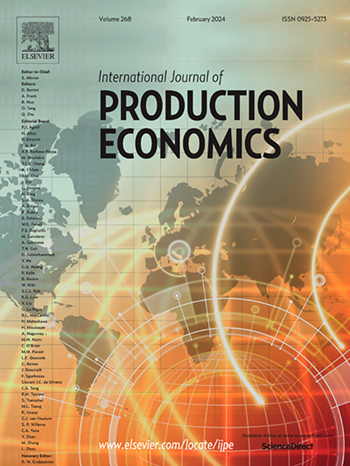在零部件的增材制造和传统制造之间做出选择:故障率不确定性的影响及减少故障率不确定性的工具
IF 9.8
1区 工程技术
Q1 ENGINEERING, INDUSTRIAL
引用次数: 0
摘要
最近,人们对使用增材制造(AM)技术生产备件产生了浓厚的兴趣:AM 可以在短时间内生产出备件,并接近使用点,从而减少了传统制造(CM)技术所需的大量库存,以应对间歇性的备件需求。然而,使用 AM 生产备件有两个主要缺点:生产成本高;由于 AM 仍是一种相对较新的生产技术,故障率不确定。虽然前者可以通过降低库存成本来抵消,但后者如何影响采购选择决策(即 AM 还是 CM)尚不清楚。我们旨在通过研究备件需求遵循泊松过程的定期审查模型来填补这一空白。为了使我们的分析准确可靠,我们利用材料科学的方法来获得故障率不确定性的现实值。分析结果表明,与 CM 相比,AM 受故障率不确定性的影响更大。因此,我们将重点放在最近开发的一些降低 AM 失效率不确定性的工具上:孔隙率评估和原位监测。我们发现,失效率不确定性应分别降低 5 个百分点和 6 个百分点,这样才值得对孔隙度评估和原位监测进行投资。最后,我们确定了在哪些情况下每种工具优于其他工具,并发现孔隙度评估通常是最具竞争力的不确定性降低工具。本文章由计算机程序翻译,如有差异,请以英文原文为准。
Choosing between additive and conventional manufacturing of spare parts: On the impact of failure rate uncertainties and the tools to reduce them
Recently, there has been great interest in using additive manufacturing (AM) to produce spare parts: allowing to produce spare parts with short lead times and close to the point of use, AM reduces the need for large inventories otherwise required by conventional manufacturing (CM) techniques to deal with intermittent spare parts demand. However, using AM to produce spare parts is limited by two main drawbacks: high production costs and uncertain failure rates arising from AM still being a relatively new production technique. While the former can be counterbalanced by inventory cost reductions, it is unclear how the latter impacts the sourcing option decision (i.e. AM or CM). We aim to fill this gap by studying a periodic review model in which spare parts demands follow a Poisson process. To make our analysis accurate and reliable, we leverage a material science approach to obtain realistic values for the failure rate uncertainties. From the results, it emerges that AM is heavily penalized by failure rate uncertainties much higher than those of CM. Consequently, we then focus on some recent tools developed to reduce AM failure rate uncertainties: porosity assessment and in-situ monitoring. We find that the failure rate uncertainty should be reduced by five and six percentage points to make it worthwhile to invest in porosity assessment and in-situ monitoring, respectively. Finally, we determine under which circumstances each tool is preferred over the other and found that porosity assessment is typically the most competitive uncertainty reduction tool.
求助全文
通过发布文献求助,成功后即可免费获取论文全文。
去求助
来源期刊
CiteScore
21.40
自引率
7.50%
发文量
266
审稿时长
52 days
期刊介绍:
The International Journal of Production Economics focuses on the interface between engineering and management. It covers all aspects of manufacturing and process industries, as well as production in general. The journal is interdisciplinary, considering activities throughout the product life cycle and material flow cycle. It aims to disseminate knowledge for improving industrial practice and strengthening the theoretical base for decision making. The journal serves as a forum for exchanging ideas and presenting new developments in theory and application, combining academic standards with practical value for industrial applications.

 求助内容:
求助内容: 应助结果提醒方式:
应助结果提醒方式:


